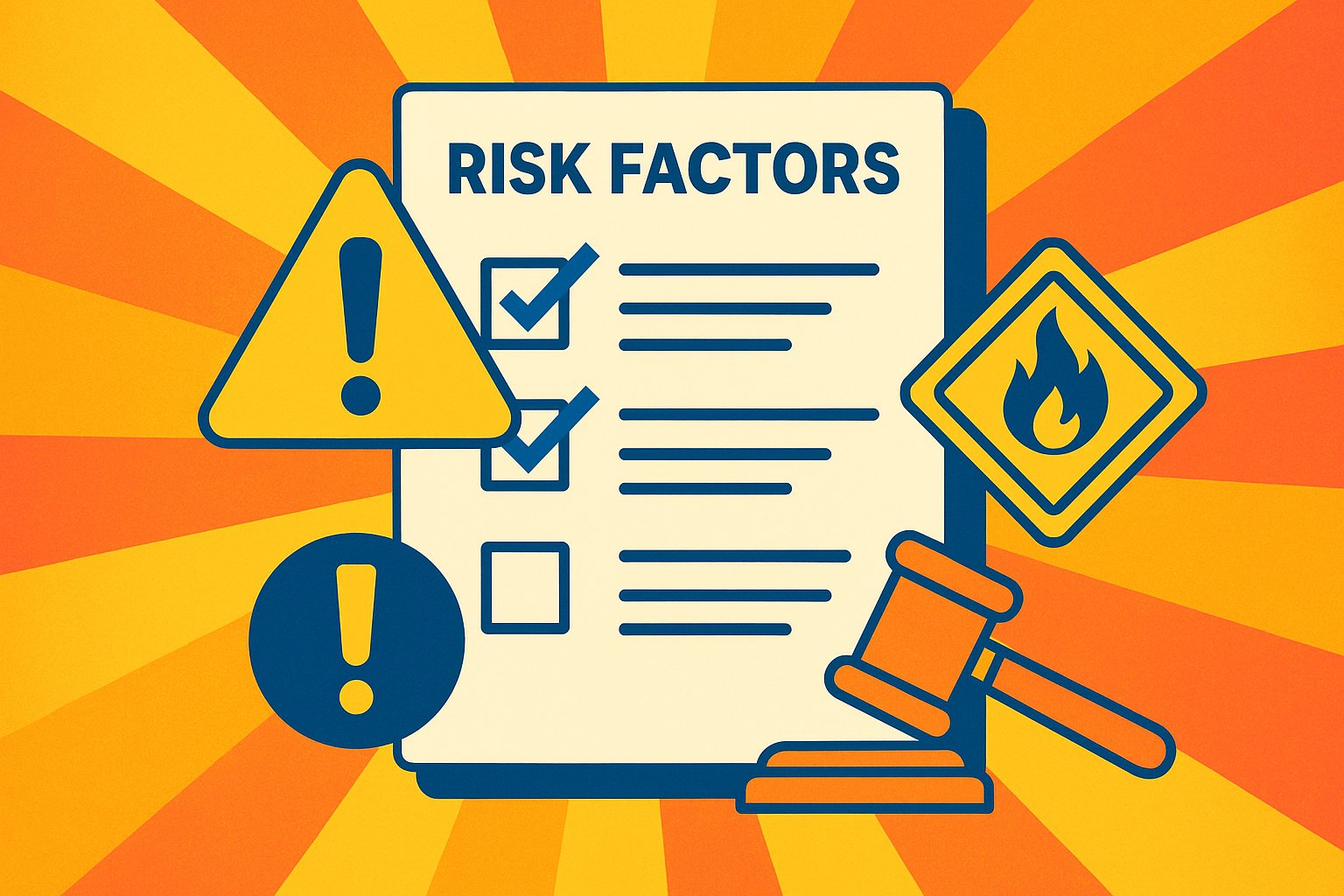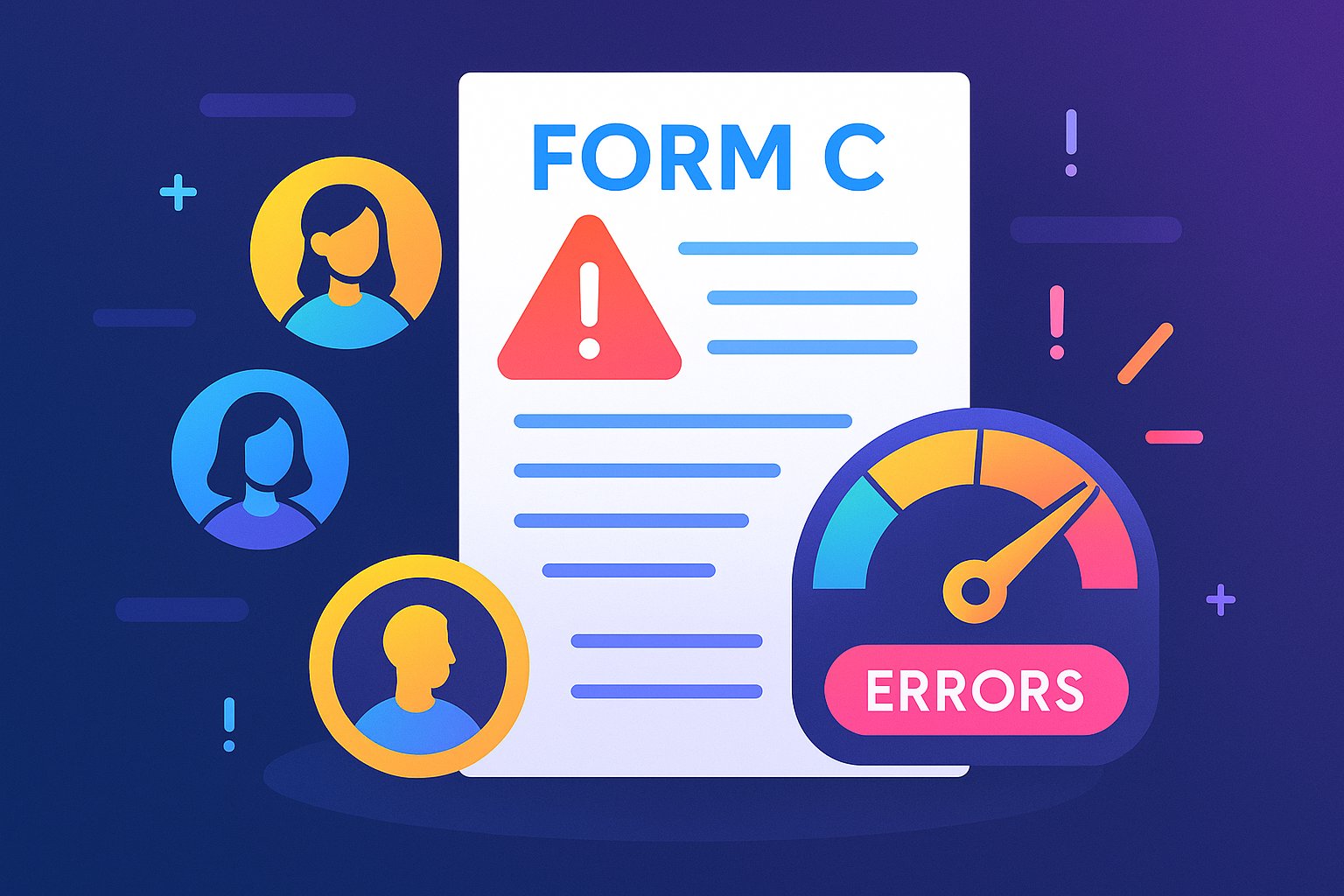The Strategic Importance of Risk Factors
When launching a crowdfunding offering, founders often focus on articulating their vision, demonstrating market traction, and crafting compelling pitch materials. Yet one of the most critical sections of any offering document is the Risk Factors disclosure. This section is not merely a regulatory checkbox; it is a foundational element that shapes investor perception, informs due diligence, and ultimately determines whether backers have the confidence to commit capital. For equity crowdfunding under Regulation Crowdfunding (Reg CF), the Securities and Exchange Commission mandates that issuers provide a clear, comprehensive narrative of the material risks facing the business. Properly drafted risk factors not only fulfill legal obligations but also foster transparency and trust, distinguishing a well-prepared campaign from one that leaves investors uncertain or wary.
A robust Risk Factors section strikes a careful balance. It must convey the potential downsides candidly—ranging from market volatility and operational challenges to legal uncertainties—without overwhelming readers or undermining the company’s credibility. The goal is to equip investors with the information they need to assess whether the potential rewards justify the risks, thereby reducing the likelihood of disputes, litigation, or regulatory scrutiny down the road. In this guide, we will explore how to identify, structure, and articulate risk factors that meet SEC standards and resonate with both sophisticated and retail investors. From regulatory compliance to narrative techniques, you will gain practical insights to draft risk disclosures that protect your campaign and enhance investor confidence.
The Purpose of Risk Factors
Risk Factors serve a dual purpose: they inform investors of the inherent uncertainties in an offering, and they legally protect issuers by demonstrating full and fair disclosure. For crowdfunding issuers, this transparency is especially important because many investors may lack prior exposure to private company investing. By candidly addressing potential obstacles—such as competition, regulatory changes, or reliance on key personnel—founders show respect for investor diligence and signal that they have thoughtfully considered downside scenarios. From a legal perspective, a well-drafted Risk Factors section can mitigate liability by establishing that the company took reasonable steps to disclose material information. In contrast, vague or incomplete risk disclosures can leave issuers vulnerable to claims of misrepresentation or omissions in a subsequent enforcement action or investor lawsuit.
Regulatory Framework: SEC Requirements for Reg CF
Under Regulation Crowdfunding, the SEC requires that Form C filings include a “Risk Factors” section that discusses “the most significant factors that make the offering speculative or risky.” These disclosures must be tailored to the issuer’s specific circumstances rather than relying on boilerplate language. Key regulatory expectations include presenting risks in subheadings with clear titles, discussing material risks in sufficient detail, and avoiding the burying of critical information in dense prose. Moreover, issuers must update risk factors through amended filings if new material risks emerge post-launch. Understanding these requirements from the outset sets the stage for a compliant, transparent campaign that withstands regulatory reviews and investor scrutiny.
Identifying Material Risks Specific to Crowdfunding Offerings
The first step in drafting risk factors is to identify the universe of potential challenges unique to your business and your crowdfunding structure. Start by brainstorming across operational domains: financial health, market dynamics, legal and regulatory environments, intellectual property, management capacity, technology dependencies, and capital structure. Supplement this internal analysis with competitive benchmarking—review risk disclosures from similar companies that have successfully raised via Reg CF, Reg A+, or Regulation D. Engage cross-functional teams, including legal, finance, and operations, to ensure that no critical risk is overlooked. This collaborative process yields a comprehensive list of candidate risk factors that can then be prioritized based on materiality.
Business Model and Market Risks
Every startup operates within a market context defined by competition, customer behavior, and broader economic trends. Risk disclosures in this category might address the possibility that market adoption of your product or service will be slower than anticipated, that competing solutions could erode your value proposition, or that macroeconomic downturns could reduce consumer spending. Founders should reference relevant data points—such as market size estimates, growth projections, or customer concentration metrics—to ground these risks in reality. By framing business model and market risks against real-world benchmarks, issuers demonstrate both market acumen and humility regarding uncertainty.
Financial and Liquidity Risks
Crowdfunding issuers must articulate the financial risks associated with their capital structure, cash burn, and funding timelines. This includes the possibility that the raise may not achieve its target, leaving insufficient runway to execute critical milestones. If the campaign exceeds its maximum cap, issuers should describe how they plan to allocate additional funds without diluting shareholder value. Liquidity risks—such as the lack of secondary markets for Reg CF securities and extended hold periods until a liquidity event—should also be discussed so investors fully understand the constraints on converting their holdings to cash. Presenting pro forma financial scenarios and sensitivity analyses can enrich these disclosures, offering investors a clearer picture of fiscal resilience under various outcomes.
Operational and Technological Risks
Operational risks cover the nuts and bolts of delivering on your value proposition: manufacturing delays, supply chain disruptions, technology failures, or vendor dependencies. If your business relies on third-party providers—whether for cloud infrastructure, component sourcing, or distribution partnerships—outline the potential impact of service interruptions or contract terminations. For software-based companies, address the risk of security breaches, software bugs, or data loss, and describe mitigation measures such as backup systems, encryption protocols, or development roadmaps. By detailing operational contingencies and technology safeguards, issuers reassure investors that they have planned for foreseeable challenges and are committed to maintaining business continuity.
Legal and Regulatory Risks
Navigating the complex web of laws and regulations is a major hurdle for many startups. Risk factors should cover current and anticipated legal obligations relevant to your industry: licensing requirements, data privacy statutes, environmental regulations, or healthcare compliance standards. If you intend to expand internationally, discuss cross-border regulatory risks such as differing tax regimes, import/export restrictions, or local data protection laws. Additionally, outline the risk of litigation—from patent disputes to consumer class actions—and describe any existing or threatened legal proceedings. Presenting a clear-eyed view of legal risks underscores your management team’s diligence and commitments to regulatory adherence.
Intellectual Property and Competitive Landscape Risks
Your company’s competitive edge often rests on patents, trademarks, trade secrets, and proprietary know-how. Risk disclosures must address the possibility that issued patents could be challenged, that trademarks may infringe on third-party rights, or that trade secrets could be compromised through employee or partner misconduct. The risk of new entrants or disruptive innovations should accompany these IP considerations, acknowledging that market leadership can shift rapidly in technology-driven sectors. By presenting both IP and competitive landscape risks, issuers convey an understanding of how to defend their market position and the importance of continuous innovation to remain relevant.
Management Team and Governance Risks
Investors place considerable weight on the capabilities and track record of the founding team. Risk factors in this domain should highlight the potential impact of key personnel departures, the challenges of scaling organizational structures, or the risk of inadequate board oversight. If your company lacks formal governance policies—such as conflict-of-interest procedures, audit committees, or cybersecurity frameworks—describe plans to establish these mechanisms as you grow. Transparent discussion of management risks signals that you view governance as a strategic imperative, reducing investor concerns about unchecked decision-making or leadership gaps.
Crafting Clear and Balanced Disclosures
While comprehensiveness is crucial, risk disclosures must also be readable and digestible. Overly technical language or dense paragraphs can obscure critical information and deter investor engagement. Use concise subheadings that encapsulate each risk (for example, “Dependence on Third-Party Manufacturers” or “Data Privacy and Security Regulations”) and follow each with a focused discussion of the risk and its potential impacts. Where possible, quantify risks—such as supplier concentration percentages or projected fines under GDPR—to provide tangible context. Avoid speculative or boilerplate language that dilutes credibility, and instead anchor statements in concrete examples and realistic projections.
Structuring and Ordering Risk Factors
The sequence of risk factors can influence reader perception. Place the most material and distinctive risks first—those that are likely to have the greatest impact on business performance or investor capital. Secondary risks, such as minor market fluctuations or low-probability events, can follow. Consistent formatting across sections reinforces professionalism and helps investors navigate the document. Consider grouping related risks under thematic subheadings, such as “Financial Risks” or “Regulatory Risks,” to improve clarity. A well-organized structure transforms a daunting list of uncertainties into an accessible roadmap for investor analysis.
Using Plain Language and Avoiding Legalese
Investors range from seasoned venture capitalists to first-time retail backers, so accessibility is paramount. Replace jargon and legalese with plain-language equivalents without sacrificing precision. For instance, rather than stating “the company may not achieve product-market fit,” explain that “if customer demand does not align with our product features, we may be unable to generate sufficient sales to sustain operations.” Where technical terms are unavoidable, provide brief definitions or context. Plain language builds trust and ensures that all readers can grasp the nature and severity of each risk.
Updating and Amending Risk Disclosures
Crowdfunding campaigns often span weeks or months, during which new risks may emerge. Regulation Crowdfunding mandates that issuers file amendments to Form C when material changes occur—such as leadership transitions, significant new partnerships, or shifts in revenue expectations. Treat risk disclosures as living documents: establish internal processes to review and revise this section regularly, integrating input from legal counsel, finance teams, and external advisors. Proactive updates signal to investors that you prioritize transparency and are vigilant about communicating evolving circumstances.
Common Pitfalls to Avoid
Several missteps can undermine the effectiveness of your Risk Factors section. Overloading the document with hundreds of risks dilutes focus and may overwhelm readers. Conversely, omitting substantive risks—whether out of optimism or oversight—exposes you to legal liabilities. Copying boilerplate language from other issuers without customization can backfire; generic risks signal a lack of introspection. Finally, burying critical risks in footnotes or obscure sections reduces their visibility, potentially triggering regulatory scrutiny. By steering clear of these pitfalls, you ensure that your disclosures are both robust and credible.
Best Practices for Review and Approval
Before finalizing your risk disclosures, conduct a multi-layered review involving legal counsel, financial advisors, and executive leadership. Utilize standardized checklists aligned with SEC guidelines to verify compliance. Solicit feedback from trusted board members or industry mentors to identify any missing perspectives. Where feasible, engage a third-party reviewer—such as an experienced crowdfunding consultant—to audit the Risk Factors section with fresh eyes. Scheduling review cycles early in the campaign timeline allows sufficient time for revisions, avoiding last-minute scrambles that can compromise quality.
Turning Risk Disclosure into a Competitive Asset
Drafting effective risk factors for a crowdfunding offering is both an art and a science. It requires deep self-reflection about your company’s vulnerabilities, rigorous adherence to regulatory mandates, and skillful narrative framing to maintain investor engagement. By identifying material risks, structuring them clearly, and updating them proactively, you transform a compliance requirement into a strategic asset—demonstrating transparency, fostering investor trust, and differentiating your campaign in a crowded marketplace. As you prepare to launch your offering, remember that candid, well-crafted risk disclosures not only protect your company from future disputes but also empower backers to make informed decisions, setting the stage for successful fundraising and long-term partnership.




